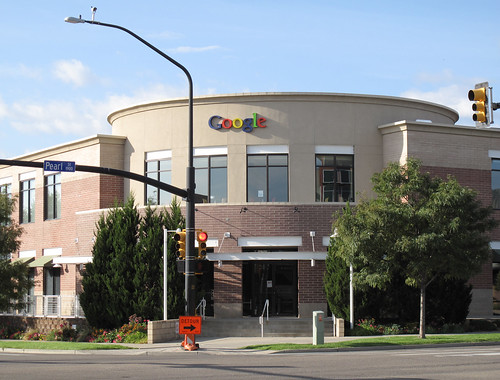Best of 2014 #9: Genius hour isn’t a great idea for novice classes
Before you read the ninth most popular Musicuentos post of 2014, in which I argue that Genius Hour (also known as 20 Time or 20% Time) is philosophically incompatible with teaching novice language learners, you have to promise me that you’ll click the links at the bottom to Laura Sexton’s blog, because if anyone could pull off Genius Hour in the language classroom, she can. However, if you’re not willing to put in the time she does to figure out how to make it comprehensible for them, this fad idea is not for you.
Why Genius Hour Can’t Work in a Novice Classroom

Sometimes, the business world comes up with a really great idea that works well in education. Sometimes, that idea catches on like wildfire and makes a big difference for student learning.
Sometimes, it doesn’t. At least, not for everyone.
Particularly those of us who might be considered “early adopters” have a bad habit of hearing about an innovative, intriguing idea and assume that it has to be great for every classroom. We forget to evaluate the idea against the principles we know to be true about language learning. I’m afraid that’s what’s happening with this curriculum scheduling approach called Genius Hour, or 20% Time.
You can get a good in-depth introduction to the concept of 20-Time from 20 Time in Education, but briefly, ostensibly the most famous perk of working for Google is the opportunity to spend one day a week, or 20% of work time, working on independent projects of the employee’s own choice. The idea was considered so motivating and inspiring (it brought us, for example, Gmail and Adsense) that many other companies copied it, and then it spread to education. Won’t students be so inspired and motivated if we let them work on whatever they want to for 20% of the time we see them?
I’m guessing you see where I’m going with this. But I’m going to keep going anyway.
The power of choice
Fast forward to this summer, when my cyberfriend and colleague Bethanie had the great idea to have a virtual “edcamp” for language teachers to collaborate and brainstorm on creating and planning curriculum for the new school year. It was called #langcamp and it’s open for anyone to check out resources and ideas (Google Drive folder, wiki set up by Laura). Soon a subfolder was created by a teacher (Jennifer Geroux) who was particularly interested in using it in Spanish 3. Several more teachers interested in the concept joined in the conversation and they discussed how to implement Genius Hour (another term commonly used to refer to 20% Time) in the world language classroom. The reasons were obvious. I’ve blogged extensively about how powerful and motivating it is to incorporate choice in the classroom, and these teachers knew it too:
I want to offer my students more freedom in choice.
I really would like to give them some freedom.
I’m interested in this passion-driven concept.
I really like the idea of something more student-driven.
So, the concept begins with a good idea, but the potential problems are also fairly obvious.
Lacking the most important tool
The teachers brainstorming Genius Hour realized that this could be really powerful for intermediate students, and also immediately had doubts about how to do something so creative with students who can’t actually create with language (the definition of novices):
I don’t want to take away from TL time.
I would like to discuss best practices of its implementation in WL classes without sacrificing TL time.
I do have my doubts about fitting it into the WL classroom without conflicting with TL use. I admit, I need a bit of convincing in that area.
I want to implement this but not at the cost of TL time.
I’d very much like to harness the power of genius hour in the target language.
The fact is that Genius Hour can’t work with novices in the target language. Genius Hour assumes people will use skills and tools they’re good at to produce something new, innovative, interesting. Novices, by definition, do not have these skills or tools. These teachers were realizing it too:
Novice learners will need some general direction/guidance…otherwise I feel that the project is too open-ended and they will just be lost.
I think the topics have to be limited, especially at the novice-level.
I’m not sure how to scaffold it for novices.
We need to find balance between passion projects and TL acquisition.
Once you realize that novices can’t do Genius Hour and target language together, you have to do one of two things: give up on a lot of TL, or give up on some of the concepts of Genius Hour.
Giving up on target language
If you’re a teacher of novices, let me ask you a question. Imagine that you use one day a week of your class time and tell students that they can work on anything they want, as long as the product has some kind of target language in it (wait – that’s a caveat – more on that below). What will your students do? What will they learn? I can tell you what I think they’d do. For the ones who are really on top of things and motivated to research and produce in the target language, they’ll get incredibly frustrated. For the ones who are in your class just to fulfill a requirement or because their girlfriend is there, they’ll do as much as they can get away with in English. This entered the #langcamp discussion too:
If we’re not streamlining the process for them in a way that promotes some type of fluency or knowledge of culture, I feel 20 time would be a better fit outside of our language classrooms (as as a requirement to an English course, for example).
At Level 1 I probably would not require a lot of TL as they are just starting the class.
I wouldn’t require a ton of TL because the students are at least within the subject matter.
I understand the TL concerns especially with lower level students… The usage of the TL would vary depending on the project they choose.
I personally wouldn’t require TL if the students aren’t yet ready to produce the language.
Giving up on Genius Hour
Strictly speaking, 20-Time wasn’t complete freedom even for Google. I mean, Google didn’t intend for their engineers to spend 1/5 of their time watching videos on how to bake a great loaf of bread. They expected that projects would be related to computer programming at the very least. With GH in the world language classroom, at least you’d have to make some stipulations: does the research have to be in TL? The product in TL? Does the topic have to relate to the cultures of Spanish-speaking peoples? Here’s what came up in the discussion: Teachers thought that the concept meant that “whatever their passions are we can somehow put it in the WL classroom” but,
Something else to consider is that limiting the topics may take away from it being a truly passion-driven model.
In limiting topics the students can choose from (must be about culture, must be TL-related, etc) in order to accommodate Genius Hour within our classes, it kind of morphs the passion-model into a traditional “let’s research culture” project.
I do not want to limit my student’s choices for genius hour.
If it is a project that you want them to work on, the students might feel limited in their “genius” inspiration.
Mandating culture
If you’re letting students do whatever they want, there seems to be a dilemma of how to bring in the cultural element. The idea was presented to filter the student’s passion through the lens of a Spanish-speaking country and that went over well (but is still giving students guidelines). When it comes to “teaching” culture, though, the bottom line is that teachers who are wondering how to do it are almost always making one very glaring mistake: they’re not using authentic sources. If they were, culture would just be there.
Guidelines plus choice
So, what’s the answer here? As for the #langcamp teachers, at least one decided that Genius Hour did not fit with the format and goals of a world language class. Two, that I know of, successfully tweaked the concept of Genius Hour and implemented it in their classrooms this past semester (see the Connect section below).
As for me, I’ve seen the power of letting students incorporate their own passions into class, but I’m still not sure I like the idea of a pure Genius Hour even with intermediate students -I have such little time with them, and I know more about how language acquisition works than they do. But for sure, with novices it simply cannot work. You can’t tell kids who can’t create with language to go create whatever they want, without sacrificing a great deal of your objectives for your class. There’s a reason you’re the teacher, and guidelines are not students’ enemy – they’re helpful. When I give students their options for their Aventura fluency homework or their final exam, if I hear, “Boy, I wish I could do X instead,” it doesn’t stifle them. It opens up a great discussion of either “This is why that doesn’t work with our class,” or “You know, that’s an awesome idea and it didn’t occur to me. Pencil it in.”
But don’t take it from me. Take it from the people who thought it up – Google. Not long after the #langcamp discussion, some pretty substantial rumors started flying around about how Google was implementing guidelines for 20% Time. The press hailed it the “death of 20 Time” and so forth. But Forbes’s Kathy Gersch called the guidelines Google’s “best new innovation” and had some great insight on the matter (emphasis mine):
Now that Google has put some rules around “20% time,” the one day a week an employee spends on side projects, people are having a field day forecasting the end of innovation at the company that claims to “use their powers for good, not evil.” To those people, I ask one question: Can a company in today’s highly competitive environment survive if they allow 1/5th of their employees’ time to be devoted to work that has no clear alignment with the company’s strategy?
The answer is … of course not.
If Google has indeed placed guidelines around their employees’ use of their “20% time” it’s probably a very smart move. Here’s why:
1. Urgency without alignment is wasted energy…
2. There’s room to explore and power to be generated from those “intrinsically interested.” [backstory there: rumor was that Google wanted managers to approve individual engineers’ 20-Time projects]…
3. Focused free-thinking builds a “change engine” into the culture.
Probably my favorite quote was in the introduction to the piece, because it’s such a great principle to remember across educational paradigms:
Structure nurtures – rather than hinders – innovation.
Amen.
Connect
If you’d like to connect with teachers interested in implementing Genius Hour or 20% Time in the world language classroom, here are some of them on Twitter and around the web. I’m sure any of them would love to discuss the possibilities with you.
- Catherine Ousselin @catherineku1972
- Jenna Hacker @jennahacker
- Jillane Baros @profabaros
Catch her reflections blogged here. - Jennifer Geroux @senorageroux
- Garnet Hillman @garnet_hillman
Explore her GH journey here. - Valerie Hays @val_hays
- Natalia DeLaat @natadel76
- Jordan Yeager @yeager85
- Laura Sexton @SraSpanglish
She’s blogged extensively about her Genius Hour adventures here.
More resources
- http://www.20timeineducation.com/
- geniushour.blogspot.com – Joy Kirr (@joykirr) is well-known on Twitter for implementing Genius Hour in her LA classes.
- http://www.livebinders.com/play/play?id=829279
- http://ditchthattextbook.com/2013/03/25/20-percent-projects-7-ideas-to-think-about/
- http://www.flipped-history.com/2013/06/gauging-20-times-effectiveness.html?spref=tw – blog post about effectiveness of 20% time
- https://www.dropbox.com/s/skd6qmeu7a12lwi/Genius%20Hour.docx via Cristina Zimmerman (@cristinazimmer4)



